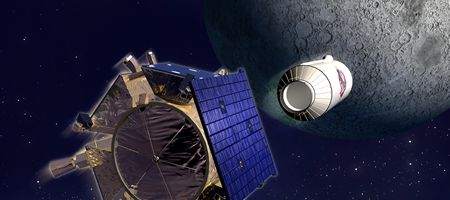NASA has concluded that there may be enough water on the moon to sustain a manned lunar base.

This time last year, NASA deliberately smashed the Centaur upper stage of its LCROSS spacecraft into a crater near the lunar south pole, with the idea of seeing what debris was kicked up by the impact.
The Lunar Reconaissance Orbiter (LRO) was watching as the spacecraft hit the Cabeus crater at over 5,600 miles per hour, sending up a plume of material over 12 miles high, which NASA has been analyzing ever since.
And it’s found comparatively large quantities of water, as well as other substances such as hydrogen, ammonia and methane, which could perhaps be used to produce fuel.
“Seeing mostly pure water ice grains in the plume means water ice was somehow delivered or chemical processes are causing ice to accumulate in large quantities,” said Anthony Colaprete, LCROSS project scientist.
“Furthermore, the diversity and abundance of certain materials called volatiles in the plume, suggest a variety of sources, like comets and asteroids, and an active water cycle within the lunar shadows.”
David Paige, principal investigator of LRO’s Diviner instrument, used temperature measurements of the lunar south pole to model the stability of water ice at and near the surface.
“The temperatures inside these permanently shadowed craters are even colder than we had expected. Our model results indicate that in these extreme cold conditions, surface deposits of water ice would almost certainly be stable. But perhaps more significantly, these areas are surrounded by much larger permafrost regions where ice could be stable just beneath the surface,” said Paige.
“We conclude that large areas of the lunar south pole are cold enough to trap not only water ice, but other volatile compounds such as sulfur dioxide, carbon dioxide, formaldehyde, ammonia, methanol, mercury and sodium.”






